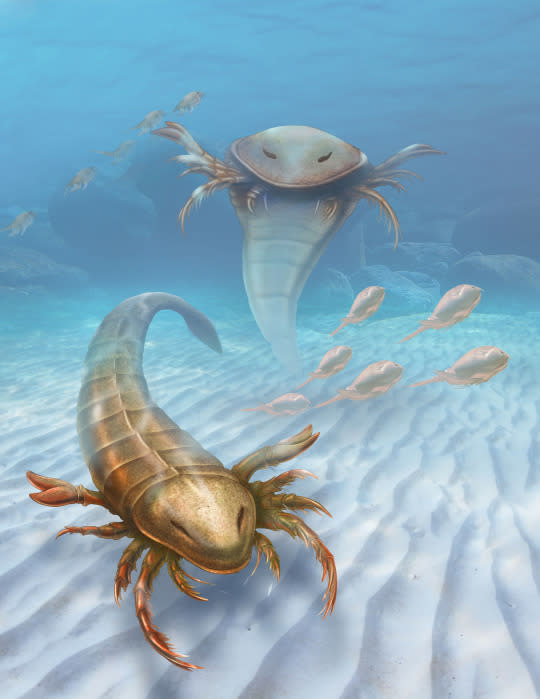‘Bizarre’ Six Foot Sea Scorpion Stuns Scientists

Here’s a creature you wouldn’t want to encounter during your morning swim - luckily, you’d have to be taking a dip in the ocean 467 million years ago to meet the pentecopterus decorahensis sea scorpion.
Named after the penteconter, an ancient greek ship that did service during the Trojan war, over 150 fossils from this powerful predator were recently excavated in Iowa.
They show a powerful predator around 1.7m long with a uniquely shaped exoskeleton ‘helmet’ to protect its head.
Lead researcher Dr James Lamsdell, from Yale University in the US, said: “The new species is incredibly bizarre.
“The shape of the paddle - the leg which it would use to swim - is unique, as is the shape of the head. It’s also big - over a meter-and-a-half long!”
He added: “Perhaps most surprising is the fantastic way it is preserved. The exoskeleton is compressed on the rock but can be peeled off and studied under a microscope. This shows an amazing amount of detail, such as the patterns of small hairs on the legs. At times it seems like you are studying the shed skin of a modern animal - an incredibly exciting opportunity for any palaeontologist.”
But modern this guy ain’t - in fact, the fossils are 10 million years older than any other sea scorpion discovered to date. It might seem like the great great (great great great) grandfather of the crab or lobster, but in fact these eurypterids are the ancestors of modern spiders.
The excellent preservation has let researchers in on a lot of the sea scorpion’s secrets - its back legs were covered in dense setae, or bristles, which may have helped it to swim or had a sensory function. Spines on some of its limbs are similar to the ones found on horseshoe crabs, which use them to process food.
When Pentecopterus was alive, it would have been a fearsome ocean predator at a time when the first animals were only just starting to colonise the land.
During this time, fish to only about a foot long and were jawless - no match for a six foot sea scorpion.
But then again, 467 million years later, who had the last laugh?

 Yahoo News
Yahoo News 
